Kepulauan Seribu
Kepulauan Seribu
 Taman Nasional Laut Kepulauan Seribu, The Thousand Islands National Park is a marine conservation area in Indonesia, located approximately 45 km north of Jakarta.
Administratively, the Thousand Islands National Park area is within the territory of the Thousand Islands Administrative District, located in North Thousand Islands District, and includes three different sub-districts, namely Panggang Island Sub-District, Kelapa Island Sub-District, and Pulau Harapan Sub-District.
Taman Nasional Laut Kepulauan Seribu, The Thousand Islands National Park is a marine conservation area in Indonesia, located approximately 45 km north of Jakarta.
Administratively, the Thousand Islands National Park area is within the territory of the Thousand Islands Administrative District, located in North Thousand Islands District, and includes three different sub-districts, namely Panggang Island Sub-District, Kelapa Island Sub-District, and Pulau Harapan Sub-District.
Geographically, this National Park is located at 5°24′ – 5°45′ South Latitude, 106°25′ – 106°40′ East Longitude and has an area of approximately 107,489 ha, consisting of 107,489 ha of marine waters, and 2 islands, namely West Penjaliran Island and East Penjaliran Island, covering an area of 39.50 ha. Thus, the other islands (land areas) totaling 108, are actually not included in the Thousand Islands National Park area.
For the Seribu Islands, the effort to regulate their marine waters has been carried out for a long time, both through regional regulations and through central regulations. The regulation on the utilization of the Seribu Islands area from excessive use of natural resources was started by the Special Capital Region Government of Jakarta. By taking into account indications of the high potential of the area and utilization of marine natural resources in the Seribu Islands region.
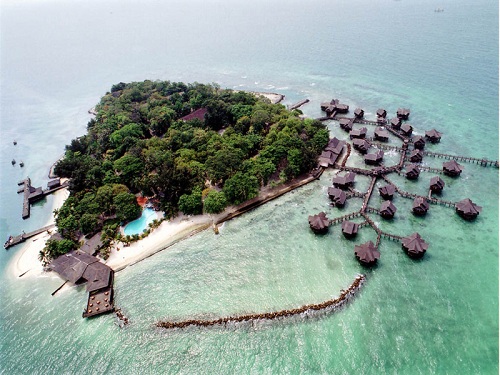 Physical condition
The Thousand Islands Marine National Park is composed of an ecosystem of very small islands and shallow sea waters, which consists of a group of islands with 78 very small islands, 86 empty islands, and a stretch of shallow sea of island coral sand of around 2,136 hectares (reef flat 1,994 ha, lagoon 119 ha, 18 ha straits and 5 ha bays), fringing reef type coral reefs, mangroves and seagrass forests with very poor nutrient/mud growth media, and shallow sea depths of around 20–40 m.
There are 3 (three) main ecosystems forming the ecological system of the Thousand Islands National Park area, namely: coastal forest, mangrove forest, seagrass beds and coral reefs. Ecologically these three main ecosystems are natural buffers for the mainland of the island which contribute benefits to humans both directly and indirectly.
Physical condition
The Thousand Islands Marine National Park is composed of an ecosystem of very small islands and shallow sea waters, which consists of a group of islands with 78 very small islands, 86 empty islands, and a stretch of shallow sea of island coral sand of around 2,136 hectares (reef flat 1,994 ha, lagoon 119 ha, 18 ha straits and 5 ha bays), fringing reef type coral reefs, mangroves and seagrass forests with very poor nutrient/mud growth media, and shallow sea depths of around 20–40 m.
There are 3 (three) main ecosystems forming the ecological system of the Thousand Islands National Park area, namely: coastal forest, mangrove forest, seagrass beds and coral reefs. Ecologically these three main ecosystems are natural buffers for the mainland of the island which contribute benefits to humans both directly and indirectly.
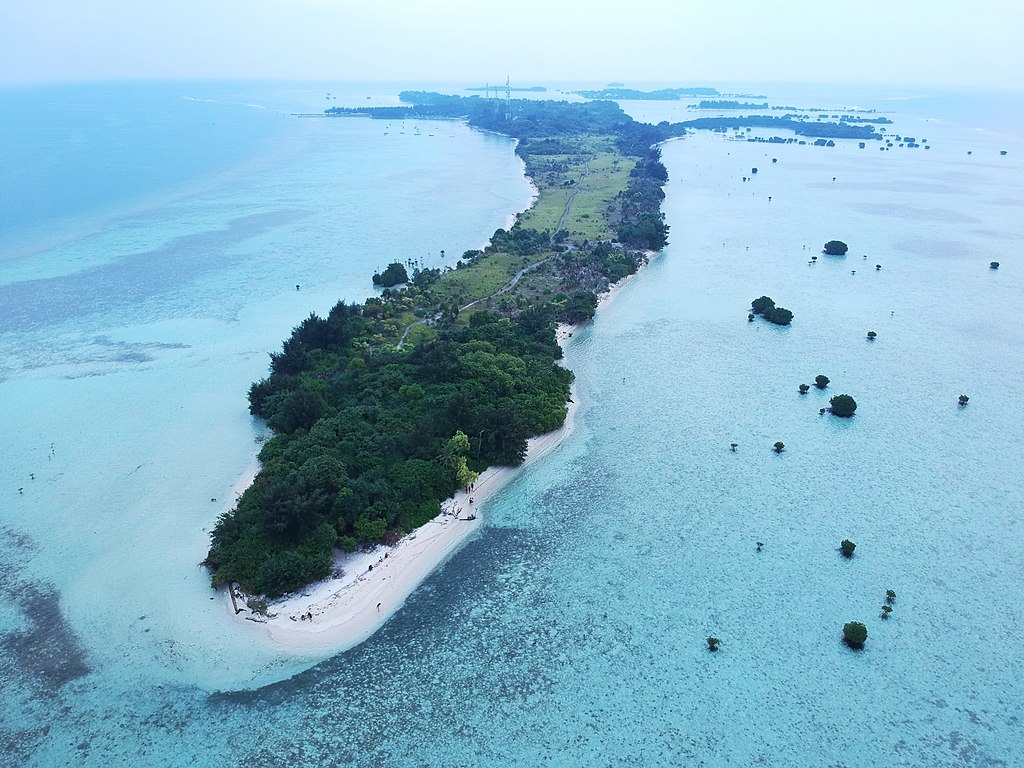 The mainland of the group of islands in the Thousand Islands National Park area has a sloping (flat) topography, has a climate type A (Schmidt and Ferguson, 1951), namely a wet tropical climate area which is influenced by 2 (two) seasons, namely the western monsoon (January – February) and east monsoon (July – August). Annual climatic conditions show that rainfall in Jakarta and the Seribu Islands each month ranges from 124.78 mm (August) to 354.38 mm (January) with an annual average of 3,810.27 mm.
The wave height in the Thousand Islands during the West season is 0.5-1.5 meters, while in the East season it is 0.5-1.0 m. Wave height varies greatly from one location to another due to variations in wind speed and the propagation of waves and the surrounding waters, according to the location of the Thousand Islands cluster which borders open water.
The waves are dominated by the East-Southeast direction which is affected by refraction when they enter the edge area. The results of observations made by Seawatch Indonesia in November 1998 – August 1999 on Kelapa Island recorded wave heights in the range of 0.05-1.03 meters with wave periods ranging from 2.13-5.52 seconds.
The mainland of the group of islands in the Thousand Islands National Park area has a sloping (flat) topography, has a climate type A (Schmidt and Ferguson, 1951), namely a wet tropical climate area which is influenced by 2 (two) seasons, namely the western monsoon (January – February) and east monsoon (July – August). Annual climatic conditions show that rainfall in Jakarta and the Seribu Islands each month ranges from 124.78 mm (August) to 354.38 mm (January) with an annual average of 3,810.27 mm.
The wave height in the Thousand Islands during the West season is 0.5-1.5 meters, while in the East season it is 0.5-1.0 m. Wave height varies greatly from one location to another due to variations in wind speed and the propagation of waves and the surrounding waters, according to the location of the Thousand Islands cluster which borders open water.
The waves are dominated by the East-Southeast direction which is affected by refraction when they enter the edge area. The results of observations made by Seawatch Indonesia in November 1998 – August 1999 on Kelapa Island recorded wave heights in the range of 0.05-1.03 meters with wave periods ranging from 2.13-5.52 seconds.
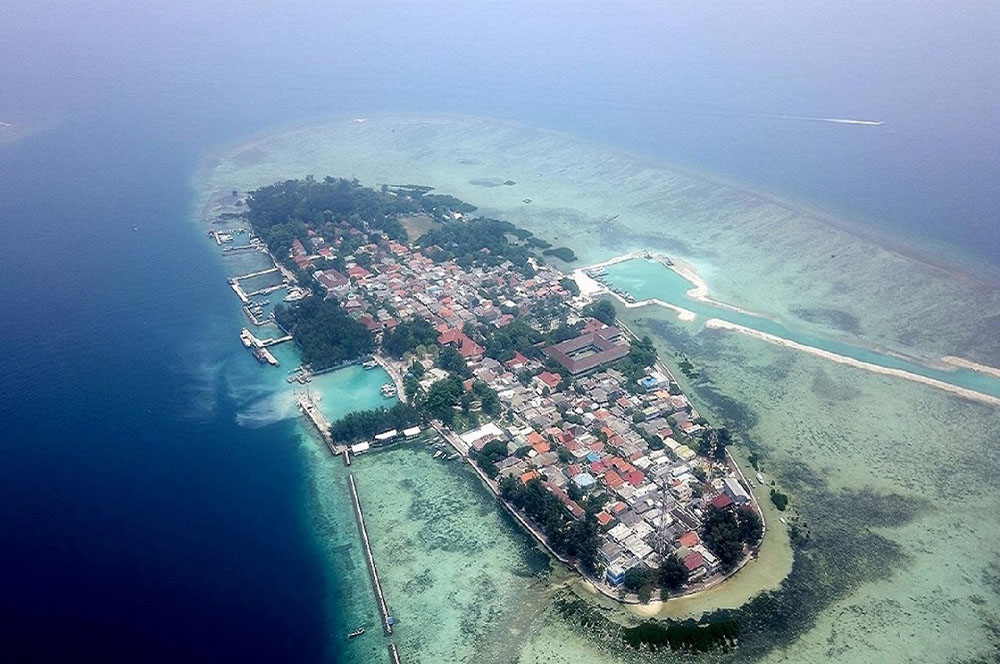 The Thousand Islands area has a flat to sloping topography with a height of about 0-2 meters asl. with the level of abrasion of the islands included in the moderate to severe category. The land area can be changed by tides with tide heights between 1-1.5 meters.
The morphology of the Thousand Islands is thus a coastal lowland, with sea waters overgrown with corals that form atolls and barrier reefs. Atolls are found in almost all of the island groups, except Pari Island, while fringing reefs are found, among others, on Pari Island, Kotok Island and Tikus Island.
Groundwater in the Thousand Islands can be in the form of unpressurized groundwater which is found as well water dug to a depth of 0.5 – 4 meters on several inhabited islands. Pressurized groundwater is also found on several islands, such as Pari Island, Untung Jawa Island and Kelapa Island (Mining Department of DKI Jakarta). The existence of groundwater in the Thousand Islands is related to the spread of ancient river sediments which form the basis of coral growth.
The Thousand Islands area has a flat to sloping topography with a height of about 0-2 meters asl. with the level of abrasion of the islands included in the moderate to severe category. The land area can be changed by tides with tide heights between 1-1.5 meters.
The morphology of the Thousand Islands is thus a coastal lowland, with sea waters overgrown with corals that form atolls and barrier reefs. Atolls are found in almost all of the island groups, except Pari Island, while fringing reefs are found, among others, on Pari Island, Kotok Island and Tikus Island.
Groundwater in the Thousand Islands can be in the form of unpressurized groundwater which is found as well water dug to a depth of 0.5 – 4 meters on several inhabited islands. Pressurized groundwater is also found on several islands, such as Pari Island, Untung Jawa Island and Kelapa Island (Mining Department of DKI Jakarta). The existence of groundwater in the Thousand Islands is related to the spread of ancient river sediments which form the basis of coral growth.
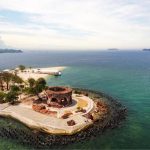

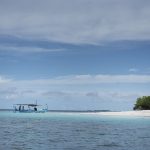
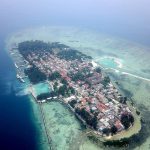
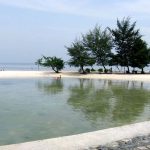
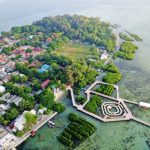
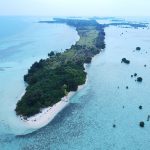

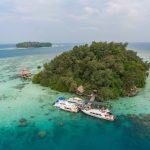
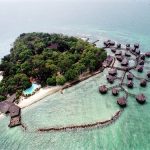












(Ha.) Water Area
0
(Ha.) Land Area
0
Types of Gastropods
0
Types of Bivalvias
0
 Flora
The original mangrove ecosystem in the Thousand Islands National Park area is only found on 11 islands, namely West Penjaliran, East Penjaliran, Jagung, Sebaru Besar, West Puteri, Pemagaran, Melintang, Saktu, Harapan, Kelapa, Tongkeng. There are 15 true mangrove species namely, Avicennia marina (Forssk.) Vierh, Bruguiera gymnorrhiza (L.) Lam., Bruguiera cylindrica (L.) Blume, Ceriops tagal C.B. Rob, Rhizophora stylosa Griff., Rhizophora apiculata Blume., Sonneratia alba J. Sm., Sonneratia caseolaris (L.) Engl., Lumnitzera racemosa Willd., Xylocarpus granatum Koen., Xylocarpus molluccensis (Lam.) M. Roem., Xylocarpus rumphii (Kostel.) Mabb., Aegiceras corniculatum L. Blanco, Pemphis acidulata J. R. Forst. & G. Forst., and Excoecaria agallocha L..
Flora
The original mangrove ecosystem in the Thousand Islands National Park area is only found on 11 islands, namely West Penjaliran, East Penjaliran, Jagung, Sebaru Besar, West Puteri, Pemagaran, Melintang, Saktu, Harapan, Kelapa, Tongkeng. There are 15 true mangrove species namely, Avicennia marina (Forssk.) Vierh, Bruguiera gymnorrhiza (L.) Lam., Bruguiera cylindrica (L.) Blume, Ceriops tagal C.B. Rob, Rhizophora stylosa Griff., Rhizophora apiculata Blume., Sonneratia alba J. Sm., Sonneratia caseolaris (L.) Engl., Lumnitzera racemosa Willd., Xylocarpus granatum Koen., Xylocarpus molluccensis (Lam.) M. Roem., Xylocarpus rumphii (Kostel.) Mabb., Aegiceras corniculatum L. Blanco, Pemphis acidulata J. R. Forst. & G. Forst., and Excoecaria agallocha L..
 The most dominant type of mangrove in the Seribu Islands National Park area is Rhizophora stylosa Griff.
The types of vegetation that can be found in the Thousand Islands Marine National Park are sea pandanus (Pandanus tectorius), butun (Barringtonia asiatica), sea pine (Casuarina equisetifolia), noni (Morinda citrifolia), sentigi (Pemphis acidula), ketapang (Terminalia Catappa) and seruni (Wedelia biflora).
The most dominant type of mangrove in the Seribu Islands National Park area is Rhizophora stylosa Griff.
The types of vegetation that can be found in the Thousand Islands Marine National Park are sea pandanus (Pandanus tectorius), butun (Barringtonia asiatica), sea pine (Casuarina equisetifolia), noni (Morinda citrifolia), sentigi (Pemphis acidula), ketapang (Terminalia Catappa) and seruni (Wedelia biflora).
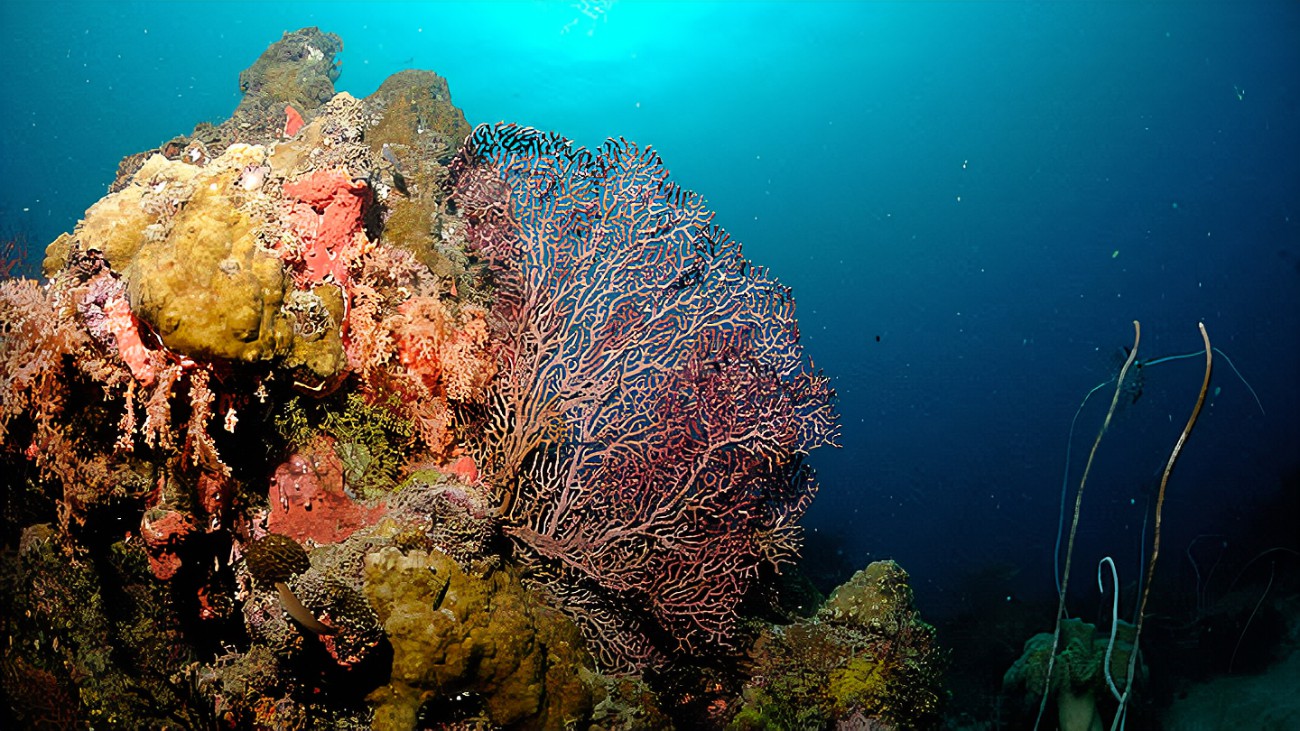 For marine plant species, the Thousand Islands National Park area grows 7 types of seagrass and 18 types of algae (seaweed). Seagrass species that can be identified are Thalassia hemprichii (Ehrenb.) Asch., Cymodocea rotundata Ehrenb. & Hempr. ex Asch., Cymodocea serrulata (R.Br.) Asch. & Magnus, Enhalus acoroides (L.F.) Royle, Halophila ovalis (R. Brown) J.D. Hooker, Syringodium isoetifolium (Ascherson) Dandy, Halodule uninervis (Forsk.) Asch.
While the types of algae (seaweed) can be separated into three groups, namely 9 types of green algae (Chlorophyta), 3 types of brown algae (Phaeophyta) and 6 types of red algae ( Rhodophyta).
For marine plant species, the Thousand Islands National Park area grows 7 types of seagrass and 18 types of algae (seaweed). Seagrass species that can be identified are Thalassia hemprichii (Ehrenb.) Asch., Cymodocea rotundata Ehrenb. & Hempr. ex Asch., Cymodocea serrulata (R.Br.) Asch. & Magnus, Enhalus acoroides (L.F.) Royle, Halophila ovalis (R. Brown) J.D. Hooker, Syringodium isoetifolium (Ascherson) Dandy, Halodule uninervis (Forsk.) Asch.
While the types of algae (seaweed) can be separated into three groups, namely 9 types of green algae (Chlorophyta), 3 types of brown algae (Phaeophyta) and 6 types of red algae ( Rhodophyta).
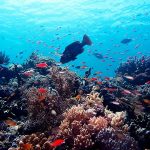
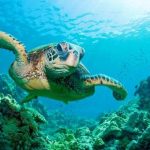
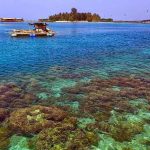


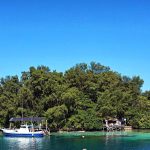












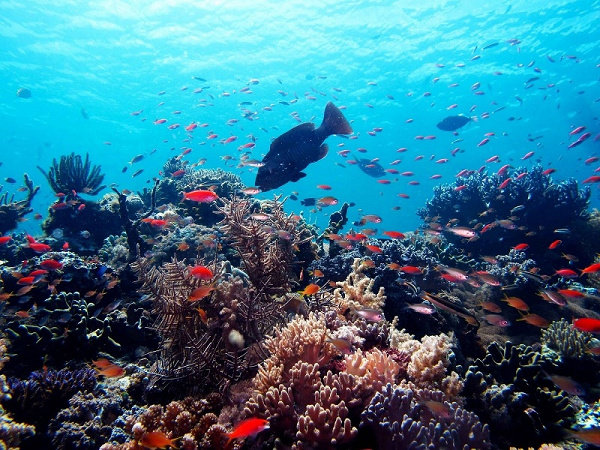 Fauna
The diversity and abundance of reef fish organisms in the waters of the Seribu Islands Marine National Park area in 2007 in the Core Zone waters amounted to 29,382 individual fish/ha, the Tourism Utilization Zone waters amounted to 49,600 fish/ha individual, and the Settlement Zone waters amounted to 32,280 individual fish/ha . Types of ornamental fish that live in the Thousand Islands Marine National Park area include kepe-kepe (family Chaetodontide), serinding fish (family Apogonidae), betok fish (family Pomacentride) and redtail fish (family Caesiodidae). While the types of fish for consumption include rabbitfish (Siganus sp.), mackerel (Scomberomorus sp.), yellowtail (Caesio spp.) , grouper (Family Serranidae) and cob (Eutynus sp.). The molluscs (soft animals) found consisted of Gastropods, Pelecypoda, including protected species including the giant clam (Tridacna gigas) and scaly clam (Tridacna squamosa).
The Seribu Islands Marine National Park area is a habitat for the protected hawksbill turtle (Eretmochelys imbricata), and its presence tends to be increasingly rare.
Fauna
The diversity and abundance of reef fish organisms in the waters of the Seribu Islands Marine National Park area in 2007 in the Core Zone waters amounted to 29,382 individual fish/ha, the Tourism Utilization Zone waters amounted to 49,600 fish/ha individual, and the Settlement Zone waters amounted to 32,280 individual fish/ha . Types of ornamental fish that live in the Thousand Islands Marine National Park area include kepe-kepe (family Chaetodontide), serinding fish (family Apogonidae), betok fish (family Pomacentride) and redtail fish (family Caesiodidae). While the types of fish for consumption include rabbitfish (Siganus sp.), mackerel (Scomberomorus sp.), yellowtail (Caesio spp.) , grouper (Family Serranidae) and cob (Eutynus sp.). The molluscs (soft animals) found consisted of Gastropods, Pelecypoda, including protected species including the giant clam (Tridacna gigas) and scaly clam (Tridacna squamosa).
The Seribu Islands Marine National Park area is a habitat for the protected hawksbill turtle (Eretmochelys imbricata), and its presence tends to be increasingly rare.
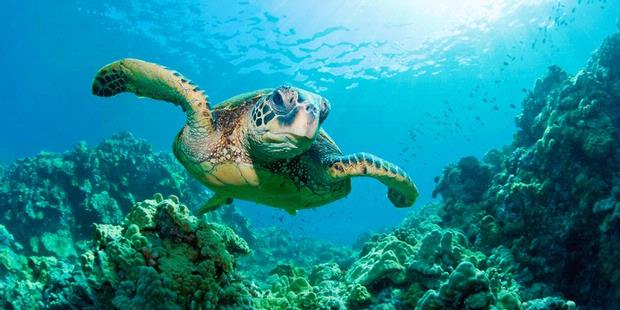 There are about 295 species of Gastropods, 97 species of Pelecypoda, 20 species of Bivalvia such as scale clams (Tridacna squamosa), sand clams (Hippopus hippopus) and giant clams (T. gigas) as well as several types of cephalopods such as squid (Loligo vulgaris), cuttlefish (Sepia sp.) and octopus (Octopus sp.). Reptile species include the hawksbill turtle (Eretmochelys imbricata), green turtle (Chelonia mydas), python (Python sp.) and monitor lizard ( Varanus sp.). The mammals found were the bobcat (Felis bengalis) and the common bottlenose dolphin (Tursiops truncatus). Echinoderms that are often found include starfish, sea lilies, sea cucumbers and sea urchins which are also indicators of damage to coral reefs. Crustaceans that are widely consumed include crabs, blue crab (Portumus sp.) and crayfish (Spiny lobster). Water birds are also found in the Thousand Islands, including seagulls (Sterna sp.) and frigatebirds (Fregata spp.).
There are about 295 species of Gastropods, 97 species of Pelecypoda, 20 species of Bivalvia such as scale clams (Tridacna squamosa), sand clams (Hippopus hippopus) and giant clams (T. gigas) as well as several types of cephalopods such as squid (Loligo vulgaris), cuttlefish (Sepia sp.) and octopus (Octopus sp.). Reptile species include the hawksbill turtle (Eretmochelys imbricata), green turtle (Chelonia mydas), python (Python sp.) and monitor lizard ( Varanus sp.). The mammals found were the bobcat (Felis bengalis) and the common bottlenose dolphin (Tursiops truncatus). Echinoderms that are often found include starfish, sea lilies, sea cucumbers and sea urchins which are also indicators of damage to coral reefs. Crustaceans that are widely consumed include crabs, blue crab (Portumus sp.) and crayfish (Spiny lobster). Water birds are also found in the Thousand Islands, including seagulls (Sterna sp.) and frigatebirds (Fregata spp.).
